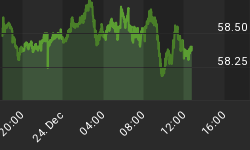Before we get into today's yen action, our regular readers and followers on Twitter were warned of a potential China tightening action at 7:24 am GMT (over 3 hours before it materialized) when most pundits were mulling the details of the yen intervention. The PBOC raised its reserve requirement ratio by 50-bps to 20% as part of its gradualist approach to reining in lending and combating inflation. My rationale for the PBOC prediction was based on the following: "China benefits from a rising yen due to its prolonged purchases of Japanese Govt Bonds. Recall that the PBOC made its first interest rate hike since 2007 (not RRR) on Oct 19, less than one month after Japan made its first intervention since 2004. Any rate hike would upset risk appetite and dampen the G7 efforts to weaken yen. After all, China is not a member of the G7."
Japan finally leads the first coordinated G7 FX intervention since 2000 (when euro was supported) via coordination rather than size. The 2 trillion yen in yen-selling was in line with previous 1-day interventions, but it is the "coordinated" element of the intervention, which has so far curbed yen-buying to the sidelines and greased the wheels of yen selling against all currencies. USDJPY rose by more than 300 points (3 yen) or 3% to 82.00, EURJPY rallied 450 points (4.5 yen) points or 4.5% to 115.50.
What about EURJPY? With Japan announcing joined intervention mainly to support USDJPY, traders are especially interested in the upside potential of EURJPY since the ECB is expected to maintain its hawkish stance into next month and the yen to remain weak into the new fiscal year. EURJPY risks are to the upside, testing 117, with rising support starting at 113.00. EURUSD is finally responding positively to the intervention, having breached my 1.4120 target (See prev IMTs), I expect 1.4180s as the next key barrier. The key question is whether the unfolding risk appetite in FX resulting from intervention will translate into a sustainable bounce in equities and prevent key US indices (S&P500 and Down-30) from closing the week below their 55-day moving averages for the first time since September.
Intervention Effectiveness? Japan's principal aim is to bring the yen to pre-earthquake levels. The durability of the latest yen weakness will mainly work to the extent of continued coordinated yen selling by the G7 central banks. From an interest rate element, coordination stands robust chances of success considering rate hike expectations priced in for the Bank of England and the European Central Bank. The same applies for the Bank of Canada, whose currency is propped by supply and demand dynamics in the oil sector. This leaves us with the Federal Reserve, which may be the weakest (and most important) link considering expectations for further QE beyond June.
Despite the prospects for intervention success from a monetary policy stance, concerted action may fail (and yen rises anew) if financial markets react negatively to the aforementioned tightening aspirations of the BoE, ECB and BoC. Today's equity rally is successfully countering the impact of China's RRR hike. But equities have more barriers ahead of them.
S&P500 and Dow-30 are be set to close the week (Friday) below their 55-dma at 1,299 and 11,976 respectively. Last week, both indices closed below their 55-dma on Thursday but recovered above it on Friday. The selloff has coincided (triggered by) a serious natural disaster with potentially dangerous global implications. Last year, it was the European debt crisis. Today, it could be nuclear disaster in an already overstretched central banking armoury and stagflationary world. A close below 1260 and 11670 tomorrow would mean a breach of the 100-dma, in which case would be reason to expect further losses until we arrive at the -10% territory.
Fore more FREQUENT INTRADAY insights analysis on forex, commodities, indices and yields, join our +11K followers on Twitter at Twitter/alaidi
















